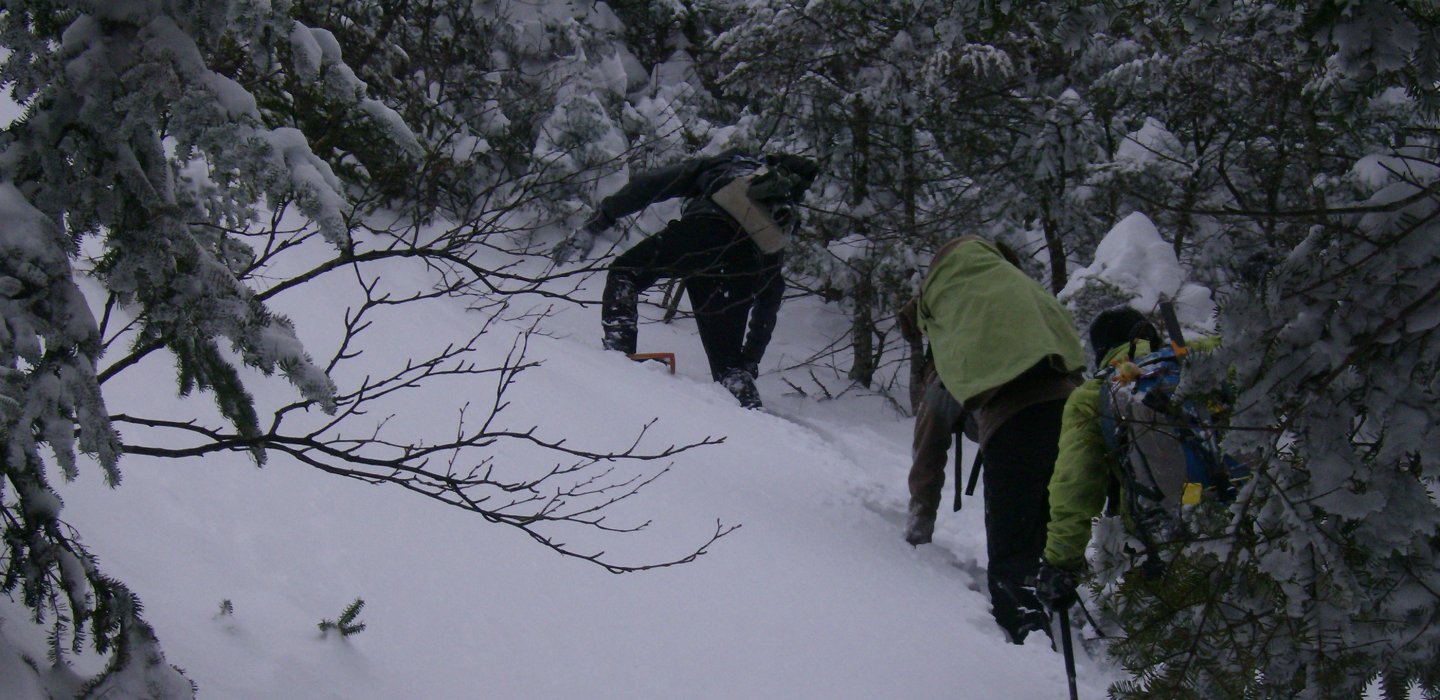
"Do they really make a difference?"
I get this question all of the time when I am hiking the trails, especially in summer. I don't think people see the value in trekking poles or understand how useful they can be. They are so much more than just something else to carry. While trekking poles are relatively simple to use, they can be confusing to purchase. Not only are there several brands to choose from, there are also key features you should consider. For example materials, basket size, suspension (or no suspension), grip ergonomics, and weight all vary depending on the design of the pole. Here's a synopsis and lesson in trekking pole selection and use.
Trekking poles have a love/hate relationship with hikers. I love them but then again, I love my knees. I find that trekking poles give me added power while ascending steep mountains by incorporating the use of my arms and creating lifting power, which takes a bit of the work off of my quads. When I am descending I find they help me be more efficient and aid in prolonging the life of my joints, particularly in the knees and lower back. When crossing brooks or rock hopping, they give me two extra points of contact for outstanding balance, which also increases my mental comfort. While in some cases they can be a burden or get in the way -- like while bushwhacking through thick terrain -- the help they offer generally outweighs any hindrances. Again, I have to mention speed. Poles do increase that, whether going uphill, downhill or on the flats. I have even used a light pair while trail running for added support, power and balance at higher speeds.
Brands of trekking poles:
OK, so this might not be the most important reason to buy a certain pair of poles, but brands do differ in quality and customer service. The fact is there are too many to list, and it seems every outdoor retailer and company slaps their name on a pair of trekking poles, many of which are made by the same companies and could either be of decent quality or of one-season-use quality. Most snowshoe makers have their own trekking pole, designed mainly for winter travel, but take off the basket and you have a pole for the summer, too. There are a few companies that are truly in the limelight as being the best and most dependable. Many poles are inexpensive, heavy and very basic. Komperdell, Leki, and Black Diamond create the most widely used trekking poles in the business. They also have some of the best warranties. Komperdell is reasonably priced, and often an outdoor retailer will have the company slap the outfitter's name on the stem as advertising. Once you get into the Leki and Black Diamond brands you can drop a bit more pocket change but you'll also get a set of poles that will last a very long time if you use them as intended. Black Diamond has a basic pole designed for backcountry skiing that retails around $60, while others with more bells and whistles may set you back $150.

Two-section, three-section and folding:
A two-section pole is strong, Usually made of aluminum, and better for skiing or in situations where durability is a factor. A three-section pole has the advantage of collapsing to a much smaller, portable piece of equipment. The third section, however, is much less durable due to its smaller diameter, and most companies don't cover the lower section under their warranty. I use two-piece poles for backcountry skiing and snowshoeing because I need durability when I face plant on a downhill section or need extra leverage climbing out of a spruce trap. I use three-section poles when I am hiking or bushwhacking. If I find they are too cumbersome while bushwhacking they collapse small enough to fit in my pack, where they're out of the way.
There is also a super lightweight option: folding trekking poles. These poles are much lighter and the shaft is of a much thinner material, They are not just made for lightweight purposes, but for storage in your pack and moving faster through the woods. These poles are becoming quite popular with trail runners, speed hikers, and ultra athletes.
.jpg)
Materials:
- Aluminum: Inexpensive, heavy and strong. Best for skiing.
- Carbon fiber: More expensive and light. The durability isn't as high, but they can take some light abuse.
- Fiberglass: Similar to carbon fiber but a bit less expensive. The durability is also similar to carbon fiber and should be treated as such. Fiberglass in often used in cross-country ski poles, but I don't recommend using cross-country ski poles for hiking because they tend to be too long for comfort of use.
Grip and ergonomics:
This is a personal preference that's important to some. While many grips are made of a hard rubber or plastic, some are made out of cork. The biggest complaints about cork are how fast it gets dirty, and the fact that it gains an odor after many uses. I agree with this. Some grips are slightly bent for a more ergonomic feel with less strain on the wrists. Rubber, depending on the quality, is the most popular grip. A minor downside of rubber is if the quality is low, you can end up with black hands after a long day of white-knuckle hiking. The biggest complaint about plastic is the hard feel and lack of comfort. The plastic in the winter also tends to be cold and even that can be felt over time.
.jpg)
Basket size:
There are basically two basket sizes available, and some come with both so that they can be switched out for different uses. The smaller one is for non-snow conditions and can be considered a three-season basket. The large one is mainly for winter use like snowshoeing and skiing. Some hikers prefer no basket when snow is not in the mix because the basket still tends to grab things along the trail like rocks, roots, and branches.
This may sound silly, but a common error is a hiker placing the large basket over the small one. This is not correct -- one must be removed first. If one is not removed the other will likely fall off during the course of the day.
I prefer no basket during non-snow months and especially while bushwhacking. The basket, no matter the size, seems to get hung up on everything. In winter I highly recommend the big basket or a snow basket. The added floatation will be an immense help, especially when unconsolidated conditions arise.
While not necessarily baskets, there are two types of feet that can also be used. One is a rubber rocker and the other is a simple rubber protector. These protect the carbide tips while using them on tarmac.
.jpg)
Suspension:
Many manufacturers are now incorporating some form of suspension into their higher-end pole selection. You will find either a spring suspension built into the shaft or a cushion just below the grip. This suspension helps on the descent to take a bit of pressure and shock off the arms, shoulders, legs, knees, and lower back. This is also a personal preference as the suspension does come with a higher price tag, although it's still much less than a knee operation. I'm not saying suspension is a saving grace to knee protection, but it surely can't hurt.
On some poles the spring suspension can be turned on and off with a half twist of the body. The cushion suspension is always on, sorry. Some find that suspension on the uphill climb hinders the power production your arms give you, and often lock it off.
Locking mechanisms:
There are two extension locking mechanisms on poles:
.jpg)
- Twist lock: The original method of adjustment. The largest downfall to this is the internal locking sleeves tend to get worn out and become smooth, allowing poles to collapse at inopportune times. To fix this you can replace the sleeve or use a bit of sandpaper to roughen it back up so it will grip. In the field use coarse sand or a rock to temporarily roughen up the surface.
- Flick lock: A simple locking adjustment where a flick of the thumb locks down the pole section. The tightness of the lock often comes loose but can be adjusted in the field with your thumbnail or a dime. The flick lock simply pinches the two poles together to keep them from collapsing.
Other uses:
- Walking and exercising around town. Be sure to use the rubber tips over the carbide.
- Tent support: Some tents only require a center support but don't come with it.You can also use your tent fly as a shelter.
- Roasting marshmallows: OK not really, but I got your attention.
- Testing the waters: Not literally, but they work nice to reach out to locate thin ice, potential spruce traps, and other hazards not seen by the naked eye.
- Mutual support: Reach out and help a friend up a steep section of trail.
- Sliding support: On snow and ice these can be used to aid in slowing down a fall.
- A rudder: When glissading or butt sliding down a mountain, poles can be used to help change direction or to slow down.
- A conversation piece: You too will get asked the question, "Are they worth it?" Now you know the answer.
Some additional thoughts on the subject:
- It is recommended to keep your elbows bent at a 90-degree angle and to adjust the poles to keep them close to that.
- Poles are not built to wedge behind rocks for added leverage on an ascent.
- Poles are not indestructible and should be cared for and cleaned regularly.
- It is not uncommon to own two sets of poles for different activities.
- Don't leave them on the summit or leaning against the side of your car and leave without them. It's easily done, trust me.
- Poles should not be used as a fire poker when camping. The baskets and threading will melt.
- Baskets are easily lost -- it's unfortunate but true -- but they are inexpensive to replace.
.jpg)
.jpg)
Do you have more questions on trekking poles? Go online to get them answered or stop into a local gear shop. Maybe while you're there, pick up a set. Many places rent trekking poles, so you can try them before you buy. Need a good place to use them? The Malone region will give you plenty of options to have a good time outside.

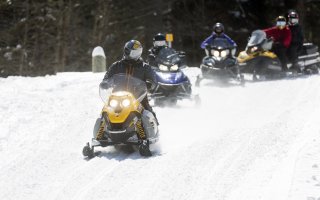
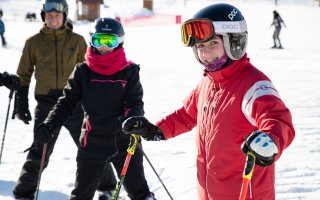

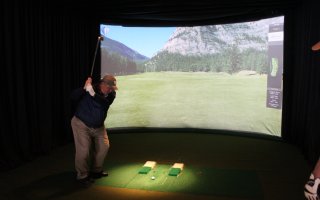
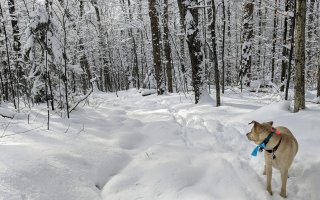
Comments
Add new comment